What's a Mudbug?
If you’ve ever been out hiking and noticed a tiny volcano made of mud, you’ve seen the home of a mudbug! Actually, mudbug is just another name for crayfish...just like crawdad or crawfish! We have 8 species of crayfish in Iowa, but in this article we’re going to talk about 3 species that commonly dig burrows.
Crayfish breathe with gills so they must have free water to get oxygen. Most crayfish live out their aquatic lives in streams, lakes, or marshes where they are able to breathe freely, reproduce, and find food. However, some species of crayfish are considered primary burrowers, which means they live most of their lives in self-made burrows. Burrowing crayfish always dig down until they hit ground water, the depth of which varies greatly. Because they are able to live in burrows with ground water, burrowing crayfish can live quite far from any surface waters. Remember those tiny muddy volcanos? Chances are they were made by a primary burrowing crayfish!
The Devil Crayfish, Lacunicambarus diogenes, is found statewide in a variety of habitats, including grasslands, bottomland woodlands, and ditches. Devil Crayfish make elaborate, multi-branched burrows that may reach 6 feet below the surface.
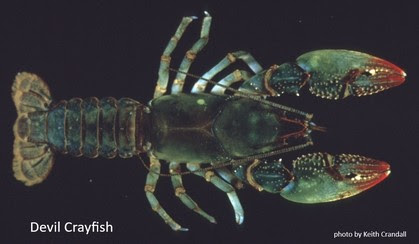
The Prairie Crayfish, Procambarus gracilis, lives primarily in grasslands and digs burrows down to ground water. Recently specimens were found in northwest Iowa, indicating Prairie Crayfish live statewide in appropriate habitat.
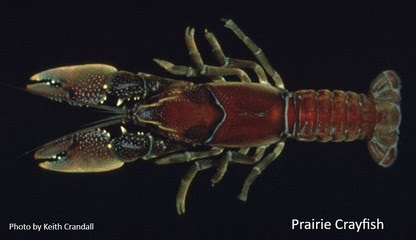
Papershell Crayfish
Our most common burrowing crayfish is not a primary burrower. The Papershell Crayfish, Faxonius immunis, is a secondary burrower meaning they live mostly in marshes, ponds and flooded fields, but will make short burrows when the waterbody dries up. Papershell Crayfish are found statewide except for extreme northeast Iowa. Populations of Papershell Crayfish can reach very high densities in productive wetlands.
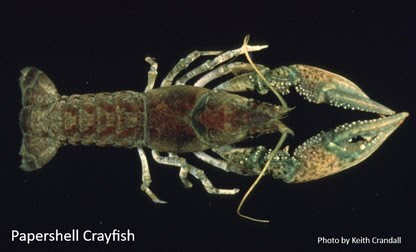
All of our crayfish are an important part of the food web in Iowa, providing food for a variety of species such as mink, otter, herons, snakes, and catfish. Crayfish eat nearly anything, which makes them a vital link in nutrient cycling. Burrowing crayfish provide more than just food! Their burrows are very important habitat for several species of rare amphibians and reptiles like the Crawfish Frog (Lithobates areolatus), Graham’s Crayfish Snake (Regina grahamii), and the Massasauga Rattlesnake (Sistrurus catenatus). These species use crayfish burrows for shelter and to hibernate, perhaps after eating the resident crayfish!
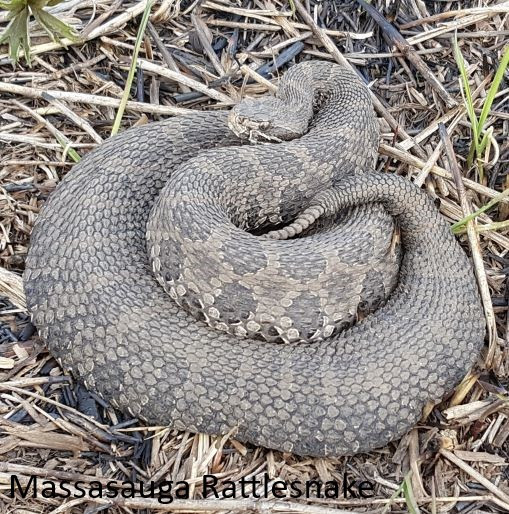
The next time you see a tiny muddy volcano, look for a mudbug!
Crawfish Frogs live in crayfish burrows for almost 11 months, leaving briefly during the spring breeding season when they return to the pond they were born in!
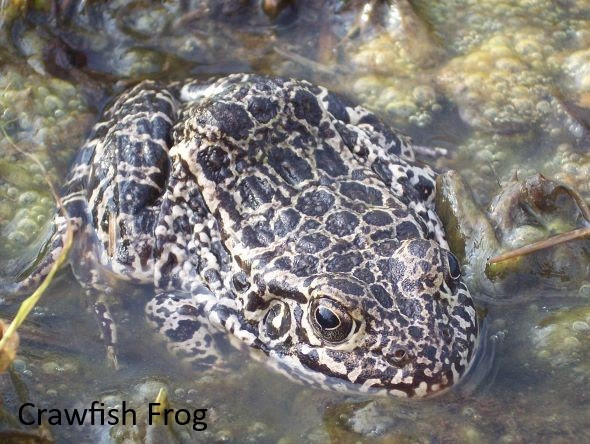
Graham's Crayfish Snakes are well-named...they only eat crayfish!
To learn more about crayfish check out this link:
https://americancrayfishatlas.web.illinois.edu/
Legal Disclaimer:
EIN Presswire provides this news content "as is" without warranty of any kind. We do not accept any responsibility or liability for the accuracy, content, images, videos, licenses, completeness, legality, or reliability of the information contained in this article. If you have any complaints or copyright issues related to this article, kindly contact the author above.
